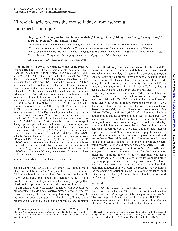摘要
Nitroalkene derivatives of linoleic acid (nitrolinoleic acid; LNO(2)) and nitro-oleic acid (OA-NO(2)) are endogenous lipid products with potent anti-inflammatory properties. The present study was undertaken to evaluate the therapeutic potential of OA-NO(2) in a mouse model of renal ischemia-reperfusion (I/R) injury. B6129SF2/J mice were subjected to bilateral renal ischemia for 30 min, followed by 24 h of reperfusion. Fifty minutes after ischemia, mice received intraperitoneal (ip) injections of OA-NO(2) (500 mu g/kg; I/R OA-NO(2)), vehicle for OA-NO(2) (i.e., 0.8 ml/kg ethanol; I/R veh), or oleic acid (500 mu g/kg; I/R OA) every 6 h during the 24-h recovery period. A sham-operated group was not subjected to ischemia and received 0.8 ml/kg ethanol ip every 6 h during the 24-h recovery period (sham veh). While plasma urea and creatinine were elevated (P < 0.05) in I/R veh vs. sham veh mice, the severity was less (P < 0.05) in I/R OA-NO(2) animals. Indices of histological damage, polymorphonucleocyte infiltration, together with expression of intracellular adhesion molecule-1, interleukin-1 beta, and tumor necrosis factor-alpha, p47(phox), and gp91(phox) were greater in I/R veh vs. sham veh mice, but were attenuated (P 0.05) in I/R OA-NO(2) animals. Because indices of renal dysfunction were similar between I/R veh and I/R OA mice (P > 0.05), but less (P < 0.05) in I/R OA-NO(2) animals compared with both groups, protection from bilateral renal ischemia is afforded by the nitrated but not free form of oleic acid. Together, delayed administration of nitrated fatty acid OA-NO(2) attenuates renal I/R injury in the mouse likely via inhibition of the inflammatory response.
- 出版日期2008-10
- 单位山东大学
